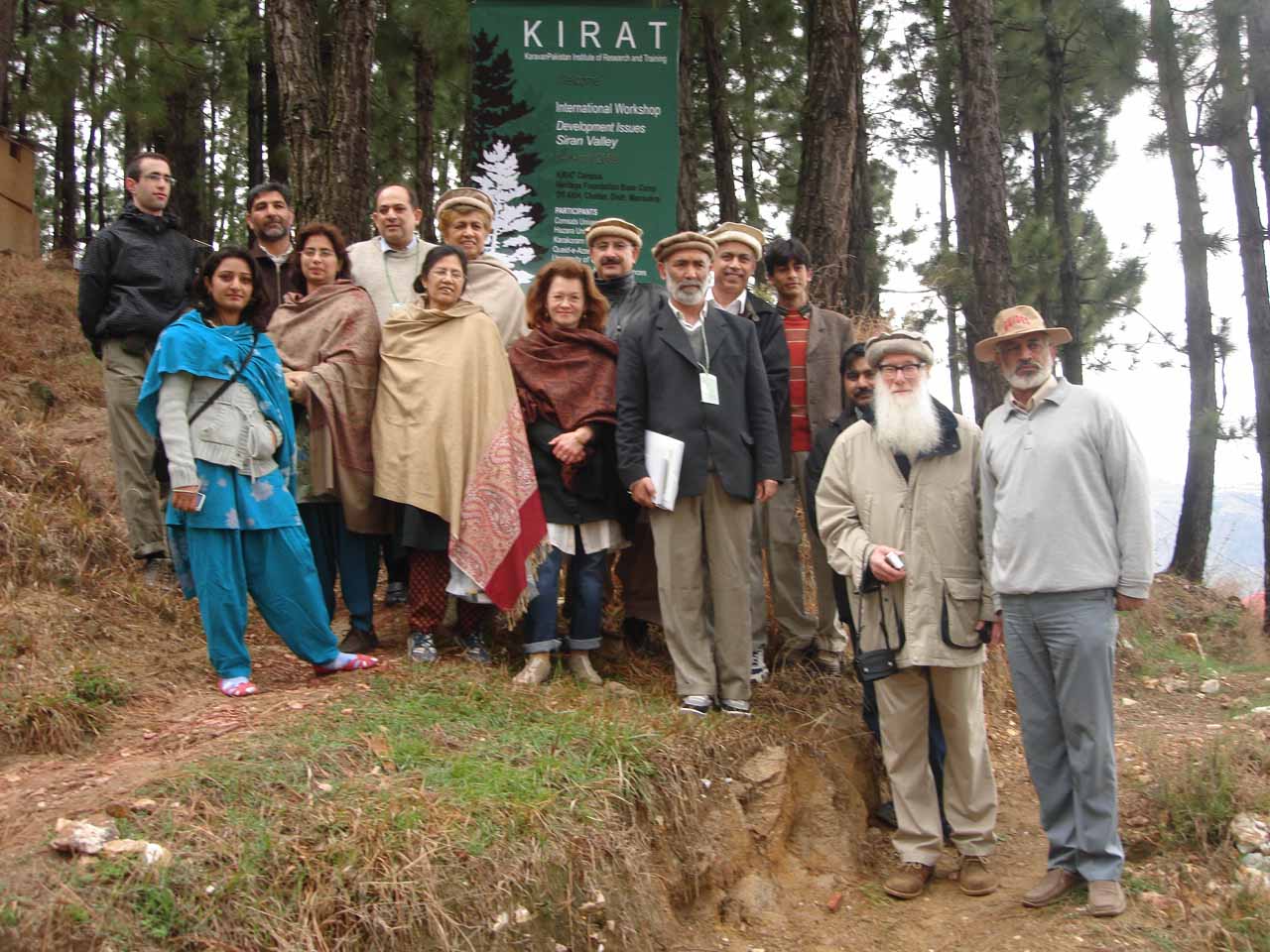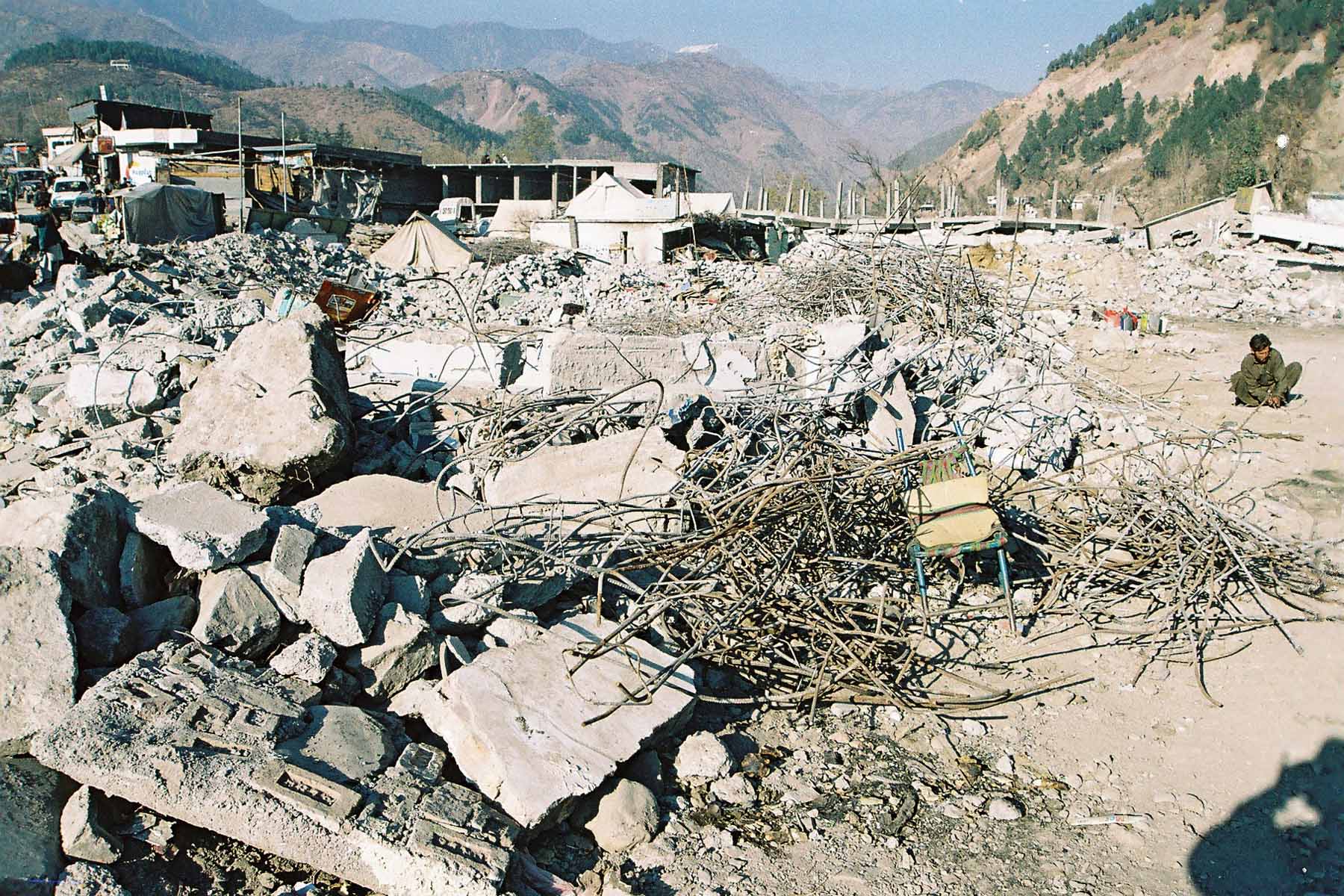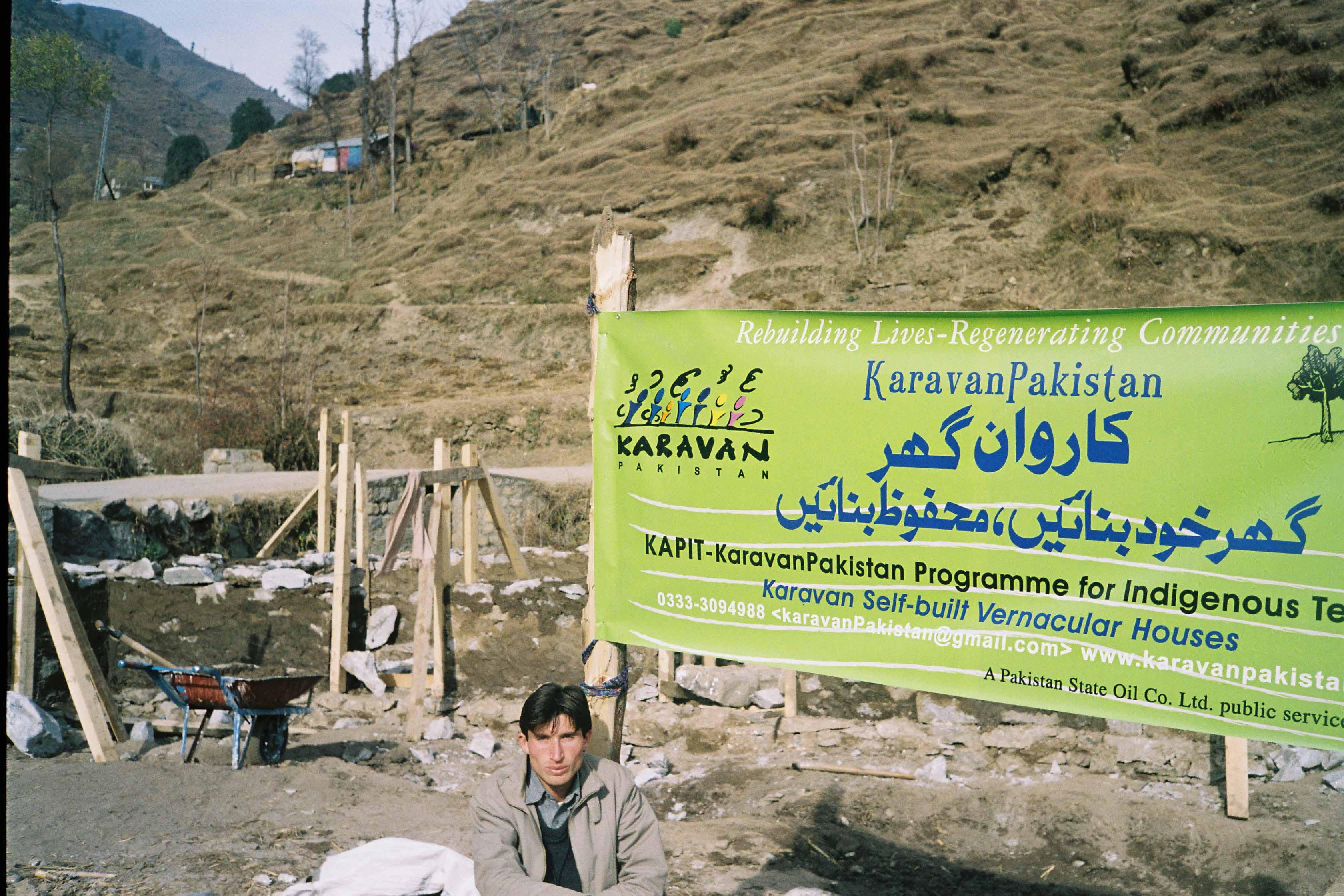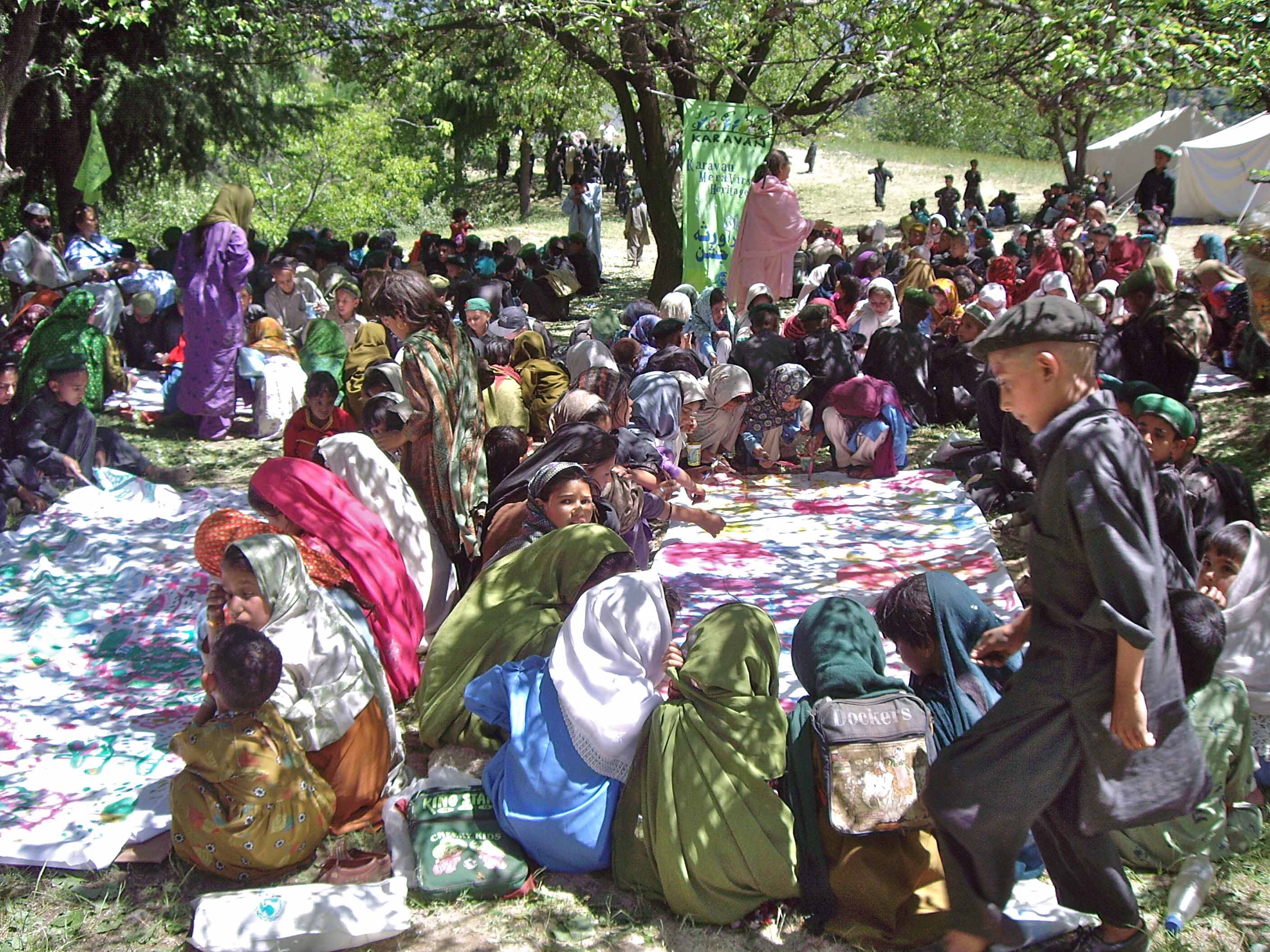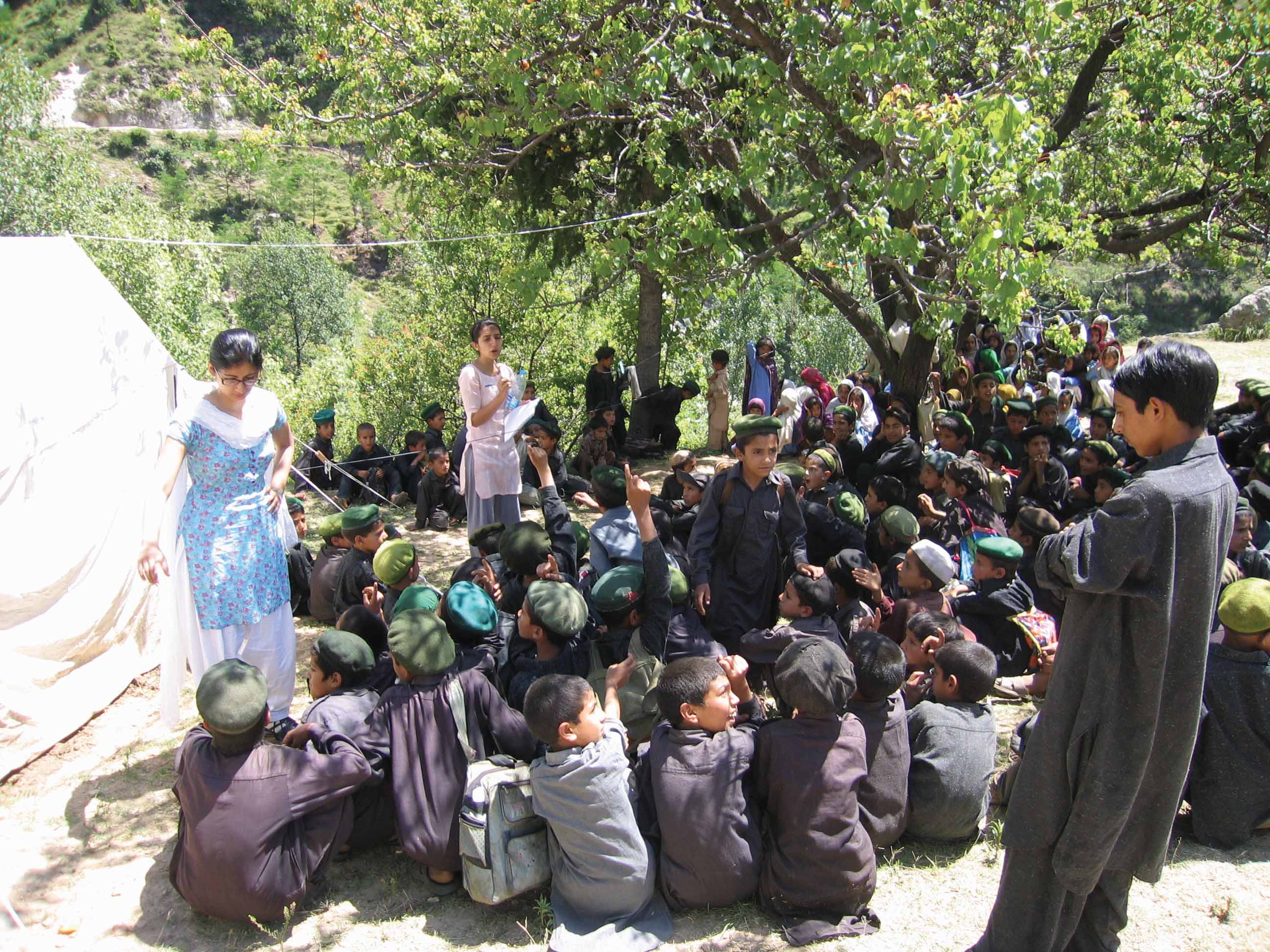Earthquake
The Earth is made up of three main layers. There is the core or the centre of the earth. It is surrounded by a mobile semi-molten layer, which is covered by the outer shell or the crust of the earth, made up of 12 individual tectonic plates.
The earth's core heats the semi-molten mantle, which makes hot liquid rise and move the tectonic plates, causing earthquakes as on 8 October 2005, when an earthquake of 7.6 magnitude struck between Balakot and Muzaffarabad in Pakistan, resulting in about 80,000 deaths and devastation over a huge area causing displacement of 400,000 families.
There are more earthquakes to be expected in the Kashmir region over the next 50 years due to the northward movement of sub continental plates into Asia. Therefore Pakistan must ensure that proper earthquake-proof structures are erected.
My wife Yasmeen Lari, S.I., H.I., designed KAPIT (KaravanPakistan Programme for Indigenous Technology) to
counteract the effect of seismic activity by reinforcing traditional building technology. She utilized the local
workforce, salvaged materials and traditional methods to establish a cost-effective, speedy and safe option. She
used lime to stabilize mud/river sand, by incorporating stone and wood from the debris. She employed fly-proof mesh
for strengthening the corners, foundations to firm soil and secure the structure to provide strength, flexibility
and resistance to sheer forces.
Yasmeen’s Karavan Pakistan teams consisting of technical team leaders (architects, engineers, building supervisors), along with students of architecture and engineering (all volunteers) were mobilized in the Siran Valley where there was an immediate need to build core units as fast as possible to provide warm abodes to save lives, as after the middle of December, it would be difficult to build houses due to snow and rain in villages above 5,000 feet. Also, there would still remain a large number of people living below 5,000 feet who would need shelter. Pakistan TV helped of its own accord, by starting to broadcast the phone number of the Heritage Foundation of Pakistan after the evening news, asking for volunteers and donations. And whenever required the Pakistan Army provided support.
The first batch of Lari volunteers started work on 15th November above 5,000 feet in Deoli, Nawazabad (Dheri Bela, Dehri Lower, Lady Councillor Village, Bela Jabbar, Lakhara, Fareed Village, Jabbar Dher, Manda Gucha, Widow Village) and Jabori. About 1150 emergency self-built shelter units were built in the Siran Valley in 75 hamlets by early April 2006, through the support of private donors and the UNDP. Architect Murad Jamil collected funds and put Mrs. Lari in touch with Nokia, who provided transport and supported the adopt-a-village programme under which 3 schools, a dispensary, tourism infrastructure and village pathways were constructed. Pakistan State Oil supported construction of two-room Karavan Schools in three union councils. Further, 17 mohallah-based Nokia-Karavan Craft Centres were established to empower women through their own cash earnings by utilizing their age-old craft of beadwork. Mrs. Lari’s school friend, Justice (retd.) Nasra Iqbal, arrived from Lahore to help, and left her overcoat to keep Yasmeen warm.
The trauma in children was addressed by conducting several workshops in creative and performing arts through young architect volunteers who joined her from Glasgow, Dublin, Isfahan, Sharjah, Karachi, Abbottabad, Islamabad and Lahore. The children of the Siran Valley painted a 5 foot wide, and 500 foot long mural in which over 500 school children participated from April to July 2006. Further workshops in June and July 2006 conducted by faculty and students of the National College of Arts yielded a large number of paintings and performances by children on issues of deforestation, garbage disposal and the environment, along with traditional tappas (songs) recounting the disaster of 8 October 2005.
Yasmeen Lari laid down the following parameters for her Rehabilitation and Development programme:
To help construct buildings which correspond to the lifestyle, cultural norms and traditions of the local community;
To avoid imposition of culturally inappropriate changes;
To avoid the use of alien forms of construction which would impact the topographical environment negatively; To utilize improved traditional building technologies and local workforce for seismic resistant structures;
To restore pride in vernacular construction techniques;
To aid the spatial reorganization of village clusters;
To maximize the use of volunteerism in rebuilding lives;
To utilize building activity and heritage safeguarding for community regeneration.
The long term plans included construction of a Heritage Museum through which a process for the conservation of local culture and heritage would be initiated, and a Catalogue of Heritage Assets of the Siran Valley was compiled.
A base camp was set up for training volunteers at Battal on the silk route connecting Pakistan with China, in a six acre pine forest on a 30 year lease, which could at any given time house about 30 people.
